Our blog was created to help make the world of wine and beer easier to understand and fun to navigate. There are a million things to know in this industry, we just want to help you understand the latest news and trends from around the globe. So sit back with your favorite sip and let's go on an adventure.
Bubbles to Fall for 6-Pack
BUBBLES TO FALL FOR 6-PACK, SHOP HERE

J. Laurens Cremant de Limoux Brut NV
- Cremant de Limoux, France
- 60% Chardonnay, 30% Chenin blanc, 5% Mauzac, 5% Pinot noir
- Traditional method
- 12 months on lees
- 91 points WE
- Lemon, pineapple, cardamom pod


Antech Cuvée Eugénie Cremant de Limoux Brut 2017
- Cremant de Limoux, France
- Chardonnay, Chenin blanc, Mauzac
- 20 - 40-year old vines
- Hand picked
- 18 months on lees
- 8 g/l dosage
- Granny smith, honeydew rind, brioche

Szigeti Gustav Klimt Blanc de Blancs Brut 2016
- Burgenland, Austria
- 100% Chardonnay
- Handpicked
- Stainless steel fermentation
- 26-48 months on lees
- Local sweet wine used for 8 g/l dosage
- Gustav Klimt painting on label
- Baked apple, peach, mango lassi


Le Monde Pinot Nero Rosé Sparkling NV
- Friuli Venezia Giulia, Italy
- 100% Pinot Noir
- Gravel, clay, and calcareous soils
- 39-year old vines
- August harvest
- Charmat method, 60 days on lees
- 8 g/l dosage
- Raspberry, red currant, rose petal

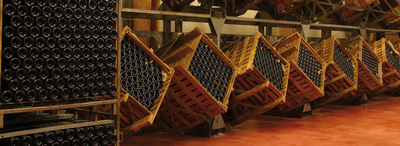
Francois Montand Méthode Traditionelle Brut Rosé NV
- Gascony, France
- Clay and limestone
- Grenache, Cinsault
- Traditional method
- 9 months on lees
- 10 g/l dosage
- Raspberry, dry cherry, watermelon rind


Jansz Tasmania Brut Rosé NV
- Tasmania, Australia
- 78% Pinot Noir, 22% Chardonnay
- Handpicked
- Whole cluster pressed
- Traditional method, first traditional method wine from Tasmania (1989)
- Fermented in stainless steel and oak barrels
- 18-24 months on lees
- Full malolactic fermentation
- 92 points DC, 91 points JH, 91 points WE, 91 points WS, 90 points JS, 90 points W&S
- Strawberry, cranberry, white rose
BUBBLES TO FALL FOR 6-PACK, SHOP HERE
Into the Outback: Hip Australian 3-Packs for Autumn
Pack #1 – McLaren Vale, Barossa Valley & Eden Valley, SHOP HERE

Pewsey Vale Eden Valley Dry Riesling 2018
- Eden Valley, South Australia
- Winery founded in 1847
- Sandy loam
- 30-year-old vines
- Native yeast
- Stainless steel fermented and aged
- 3.1 ph, .9 g/l residual
- 94 points JS, 92 points WE
- Dried grapefruit, peach, sorrel


Bink Wines ‘Sergeant J’ Red Wine 2018
- Barossa Valley, South Australia
- Solo project from Koen Janssens of Yetti and the Kokonut
- Grenache
- Native yeast fermented
- Unfined, unfiltered
- Sour cherry, red currant, red clay


S. C. Pannell ‘Smart Vineyard’ Grenache 2017
- McClaren Vale, South Australia
- “This is a label which is quite certain to become thoroughly iconic in the years ahead.” James Halliday
- 80 year old bush vines
- Red clay loam with iron and quartz
- 100% destemmed
- 10 days on skins
- Aged 11 months in 2500l foudre and 500l puncheon
- Unfined, unfiltered
- 93 points WE
- Red cherry, fresh strawberry, Thai basil
Pack #2 – Punk as...Ochota Barrels, SHOP HERE

‘The Green Room’ Grenache 2019
- Mclaren Vale
- 82% Grenache, 18% Syrah
- Planted 1946
- Limestone and schist
- 85% whole cluster fermentation
- 28-88 day maceration
- Aged 2 months
- Unfined, unfiltered
- Red plum, black cap, thyme


‘From The North’ Mourvedre 2018
- Barossa Valley
- Sand
- Planted 1869
- Biodynamic viticulture
- 100% whole cluster
- 5 day cold soak, 12 day fermentation
- Aged 3 months
- Unfined, unfiltered
- 20 ppm SO2
- Black cherry, smoked tea, anise seed

‘The Mark of Cain’ Pinot Meunier 2019
- Adelaide Hills
- Clay
- Planted 1985
- Named after a punk band Taras Ochota once toured with
- Half carbonic maceration for one month, half whole cluster traditional ferment for 6 days
- Unfined, unfiltered
- 20 ppm SO2
- Red grapefruit, rhubarb, rose hips
More Joy, Less Stress Italian Red 3-Pack
More Joy, Less Stress Italian Red 3-Pack, SHOP HERE


Feudo Montoni Nero D’Avola 2016
- Cammarata, Sicily
- Clay and sand soils
- Certified organic
- 35-year old vineyard
- Fermented in cement
- Aged 20 months in cement, followed by 4 months in barrel
- Red cherry, raspberry, star anise


Rocca di Frassinello Le Sughere di Frassinello 2016
- Maremma, Tuscany
- Collaboration between Castellare and Lafite Rothschild
- 50% Sangiovese, 25% Merlot, 25% Cabernet Sauvignon
- 2008 vintage made Wine Spectator Top 100 list
- Fermented in stainless steel
- Aged 12 months in 50% new barriques
- 93 points WS, 91 points JS
- Black currant, rosemary, iron


Iuli Umberta 2018
- Monferrato, Piedmont
- Limestone and clay soils
- Certified organic
- Vineyards planted from 1940-1999
- Native yeasts
- Fermented in concrete with a 20-day maceration
- Aged in concrete for 10-11 months
- Unfined, unfiltered
- Blackberry, black plum, fennel seed
More Joy, Less Stress Italian Red 3-Pack, SHOP HERE
Enfant Terrible: Didier Dagueneau
Scroll Down for Links to Shop

“France’s most physically messianic winemaker…” “Dagueneau glared at tasters; he poured samples with studiedly curt swiftness; all questions were met with monosyllabic replies. He would rather, one felt, have been racing huskies in Finland (as he did for three months the following winter). His wines smelled not of Sauvignon Blanc, nor of gooseberries or asparagus or of micturating felines, but of......Spring. Sipping the Buisson Renard was like standing beneath a waterfall: the flavours were clean, limpid, eerily palpable, a soft shock. The Silex was not the parody flintlock of popular myth; it was pure, sappy, soaring, rich, finishing with just a hint of stone after rain. I had not been expecting this calm and majestic retreat from the varietal. I learnt something new.” Andrew Jefford, The New France
“Due to a titanic level of work in the vineyard, his pure-bred Sauvignon Blancs act like a terroir sponge.” Michel Bettane, Le Grand Guide des Vins de France
“I had a few scores to settle with the family,’ he said. ‘So, I decided to make wine, to make better wine than them. That was my first motivation. So, I decided to make the best Sauvignon Blanc in the world. Not at all pretentious for someone who’s been making wine for two years.” Didier Dagueneau, in Decanter
“In my opinion, 80% of the growers are thick and lazy.” Didier Dagueneau, to Jancis Robinson
Exacting. Motivated. Perfectionist. Iconoclast. Daredevil. Hirsute. Didier Dagueneau looms over the Loire Valley appellation of Pouilly-Fumé 12 years after his death, as famous for his strutting rejection of conventionality and his neighbors’ still ruffled feathers as for his transcendent Sauvignon Blancs. In an era of chemical farming and overcropped, watery wines, Dagueneau demanded parsimonious yields and delicate, labor-intensive handwork in the vineyard, employing one worker for every 2.5 acres (the same ratio as Domaine Romanee-Conti). He forsook his family domaine in favor of establishing his own, forging a reputation for both brilliantly expressive single parcel cuvees and brutally frank opinions. Finally, he rebuffed the orthodoxy that Pouilly-Fumé and other Sauvignon Blanc based wines were meant for early consumption. His first wines from the mid-80’s are still (reportedly) drinking quite well.
After a short career as a motorbike racer (he retired after two severe crashes), he turned to winemaking, establishing his domaine with rented vineyards beginning in 1982. He would slowly add cuvees throughout his tenure, beginning with his flagship Silex (named for the siliceous terroir it is planted on) in 1985, and continuing until his 2006 acquisition of a small plot in the storied Sancerre vineyard of Monts Damnes, overlooking Chavignol. Didier’s winemaking idols included legendary producers Edmond Vatan of Sancerre and Henri Jayer of Vosne-Romanee, vignerons renowned for marrying transparent site expression to a singular house style.
Dagueneau, forever restless, experimented over the years with native yeast fermentation, extensive battonage, a low sulfur regime, and various types of oak, but the domaine’s core principles always remained the same. It began with massal selection vines pruned very aggressively, producing less than half the total yield allowed by the appellation. A practitioner of organics and biodynamics (though not certified; Didier did not mix well with bureaucracy), herbicides were eschewed in favor of plowing, whether by horse (he was one of the first growers to revive the practice, well before DRC adopted it) or tractor. At harvest, Dagueneau’s late harvesting and rigorous selection led to phenologically ripe wines without the damp heaviness of rot and botrytis. Elevage always took place in oak, though the vessels’ size and shape varied considerably over the years. Didier is famous for pioneering the use of 350l oblong “cigar” barrels with very low levels of toast, which allowed the piercing minerality and Satnav terroir of his cuvees to shine.
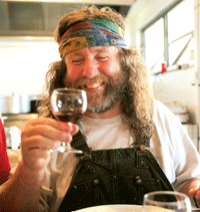
“A chip off the old Silex”
When Didier Dagueneau died following an ultralight plane crash in 2008, many assumed that his domaine was doomed. Louis-Benjamin Dagueneau, having studied with biodynamic Loire luminary Francois Chidaine and Olivier Jullien of shop favorite Mas Jullien, was ready to strike out on his own, much like his father before him. Instead, Louis-Benjamin took up his father’s considerable legacy, expanding upon the domaine’s fame with a string of successful vintages that have left some wondering if the son has surpassed the father. The vineyards are cared for with the same laborious intensity, and the work in the cellar has only become more precise and translucent. Methinks his father would be proud.
“Didier was more than a light, he was a natural phenomenon, a storm, a commotion and a celebration in a world that is often too dull and glum.”...“Yes, he was bigger than life. But Dagueneau was a man who didn't suffer fools and clichés lightly.” Joe Dressner
Dagueneau wines currently available at The Thief:

Didier Dagueneau Blanc Fume de Pouilly 2016
Didier Dagueneau Blanc Fume de Pouilly 2017
Didier Dagueneau Blanc Fume de Pouilly Silex 2015
Didier Dagueneau Buisson Renard 2016
Didier Dagueneau Le Mont Damne 2017
Didier Dagueneau Le Mont Damne Chavignol 2016
Didier Dagueneau Pouilly-Fume Pur Sang 2017
Didier Dagueneau Jurancon Les Jardins de Babylone 2009
Pinot Noirs Perfect for Hot Summer Days and Cool Summer Nights
PINOT NOIR 6-PACK, SHOP HERE

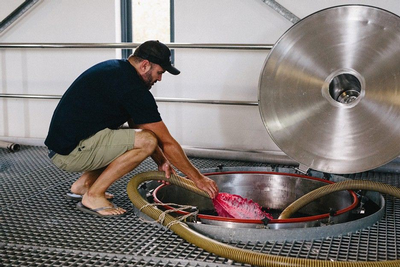
Thorne and Daughters Copper Pot Pinot Noir 2018
- Cape South Coast, South Africa
- Shale and sandstone soils
- Native yeast fermentation
- 60% whole cluster
- 18 days on skins
- No additives other than SO2
- Aged 9 months in neutral French oak
- Raspberry, satsuma, Ceylon cinnamon


Soter Vineyards Planet Oregon Pinot Noir 2018
- Willamette Valley, Oregon
- 100% Pinot noir
- LIVE certified
- Salmon-Safe
- Fermented in small, open-top stainless steel
- Aged in French oak
- Portion of the proceeds donated to the Oregon Environmental Council
- 90 points VM, 90 points WE, 90 points JS
- Dried strawberry, rhubarb, forest floor


Mckinlay Vineyards Pinot Noir 2018
- Willamette Valley, Oregon
- Dry farmed
- Organic viticulture
- Native yeast ferment
- Up to 25% new French oak, depending on vintage
- Unfined, unfiltered
- Wild strawberry, rose, cola

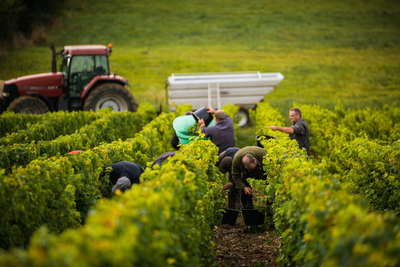
Patient Cottat Le Grand Caillou Pinot Noir 2016
- Loire Valley, France
- 100% Pinot noir
- Clay soil
- 15-20-year-old vines
- 4 ton/acre yields
- 7-day cold soak
- 7-day fermentation
- Cherry pit, bergamot, button mushroom

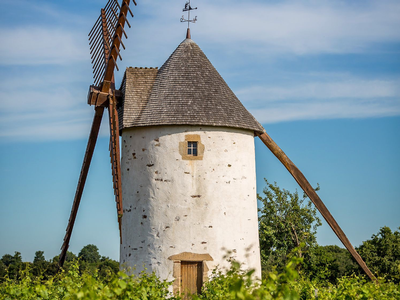
J. Mourat Rouquin de Jardin 2019
- Loire Valley, France
- 100% Pinot Noir
- Certified organic
- Rhyolite, clay, and schist
- Fermented and aged in stainless steel
- Cranberry, red cherry, seaweed


Spy Valley Pinot Noir 2014
- Marlborough, New Zealand
- Clay and silt over gravel
- Handpicked
- Native yeast fermentation
- Fermented in small bins
- Aged 11 months in oak barrels
- 92 points WS
- Raspberry, violet, white truffle
